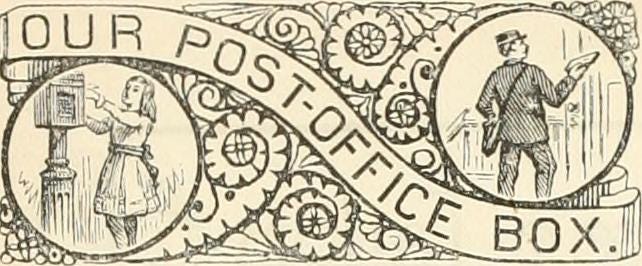Dear friends,
I’ve spent much of February struggling with migraine and its foggy brained aftermath, so I’m sending just a few lines this month. Keeping my spirits up is the wonderful, very funny, 1930s novel from E.M. Delafield, Diary of a Provincial Lady. Re-published by Persephone Books with original, (and gorgeous!) illustrations by Arthur Watts, it documents the very mundane, day-to-day problems of a wife and mother living in the south of England.
Think winter bulbs that don’t grow, fraught school holidays, nannies, servants giving notice, bills, rainy picnics, awkward social engagements, talks at the Women’s Institute, more bills, and being overdrawn at the bank.
Servants aside, what’s surprising is how relatable it is. Our unnamed narrator grapples with societal pressure to keep her looks against the onslaught of age, to wear the right clothes, to the read the right things, to say the right things.
“Am asked what I think of Harriet Hume but am unable to say, as I have not read it. Have a depressed feeling that this is going to be another case of Orlando, about which was perfectly able to talk most intelligently until I read it, and found myself unfortunately unable to understand any of it.”
Dry comedy bursts from every page but, between the lines, I’ve started to feel a little bit sorry for the lack of support provided by a husband who falls asleep every evening reading The Times and shows no real understanding of what it’s like to run a home.
Our narrator never moans, but Diary of Provincial Lady reveals just how much domestic labour — emotional and cognitive labour — falls to wives and mothers. I recalled this article from 2019, about how much labour falls to women at Christmas time, leaving so many mothers too drained to actually enjoy ‘the happiest’ season. Delafield’s narrator is so bogged down with domestic management that she never gets time to seriously pursue her own personal, literary ambitions. It’s a problem women working creatively from home continue to cite.
“(Query, mainly rhetorical: Why are non-professional women, if married and with children, so frequently referred to as ‘leisured’? Answer comes there none.)”
Earlier this month I was lucky enough to see Vanessa Bell: A World of Form and Colour at the MK Gallery, Milton Keynes. It’s a huge show — the Bloomsbury artist’s largest ever solo exhibition — celebrating the immense variety of her work. In addition to portraits and still lifes, there are examples of Bell’s painted furniture from her Charleston home, fabrics designed for the Omega workshops, designs for Virginia Woolf’s novels, and ceramics. A particular highlight is Bell’s 50 piece Famous Women Dinner Service (1932-34), featuring famous faces from Greta Garbo and ‘Miss 1933’ to Elizabeth Siddal, George Eliot, and Elizabeth Barrett Browning, pictured with her dog Flush. It’s wonderful to see an exhibition like this outside of London, and I very much hope it gets to tour other parts of the UK.
Thank you so much for reading my newsletter, your support means a lot. I wish you all a lovely March and I’ll be back with more writing very soon.
Natalie
This month’s featured images are Vanessa Bell’s ‘Nursery Tea’ (1912) and Vanessa Bell’s ‘Interior with Artist’s Daughter’ (1935-36). Banners are courtesy of the Internet Book Archive.







I had never heard of this author, but you've left me curious. The comment on reading Virgínia Woolf made me smile. Is culture in England very much centred in London? Here, most of the big exhibitions and shows happen in Rio or São Paulo (our most cosmopolitan city).
I love Diary of Provincial Lady. Query, why is the book not better known?